Posted: May 22nd, 2013 | Author: zenofex | Filed under: Asus, GTVHacker | Comments Off on “CubeRoot” Pulled From Google Play Store
The inevitable has happened, the GTVHacker “CubeRoot” Android application has been removed from the Google Play Store. At 11:14 AM CST, I received the following automated message from “Google Play Support”:
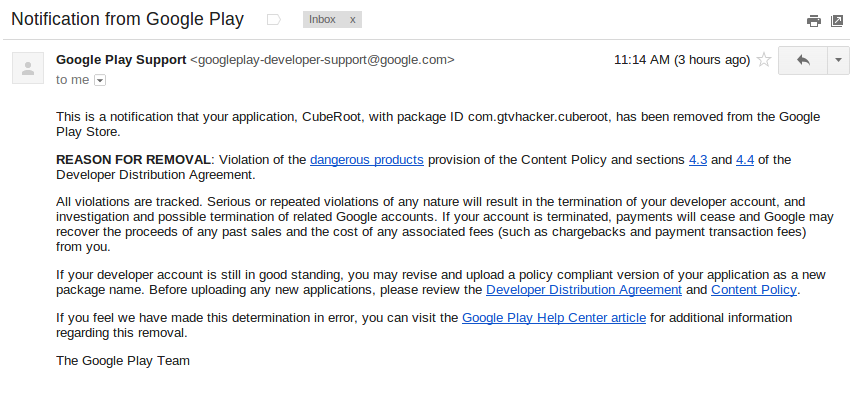
This honestly came as no surprise, we suspected that based on Google’s previous stance on the matter, our application would be removed from the market. However, it is interesting to be told the exact clause of the “Content Policy” that our app supposedly violated. Also, let it be noted that the GTVHacker CubeRoot application was listed on the Play Store for a total of 5 days.
As of today the Asus Cube is still vulnerable to the CubeRoot exploit. So even if you don’t plan on rooting your device with our exploit, you may want to consider using it solely for patching your device from attacks from malicious applications.
You can find a link [HERE] to download CubeRoot.apk.
Posted: May 17th, 2013 | Author: zenofex | Filed under: Asus, GTVHacker, Root | 5 Comments »
After almost 3 years of GTVHacker, we have continued to strive to bring the Google TV community the best “root” methods on the platform. To date we have released multiple methods for gaining root access on the first and second generations of devices. We’ve also released hardware roots and software roots but have yet to venture into Android application development, until now:
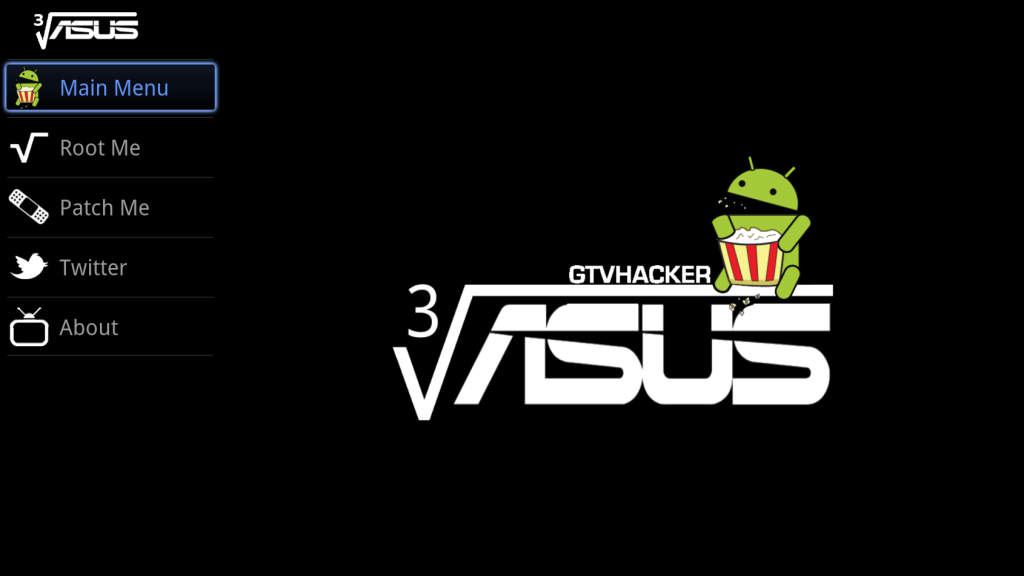
Let me introduce you to Cuberoot, a brand new root for the Asus Cube. This root leverages a local command execution vulnerability within a Unix socket for NFS mounting. This socket interfaces with a helper application that doesn’t properly sanitize input allowing local code execution. Luckily for us, this particular vulnerability is made better by being able to be exploited from within an Android app. “But with great power comes great responsibility”, and with such we’ve decided to not only provide the method for rooting the Asus Cube but also allow users an easy method of patching their device to prevent another application from exploiting the bug for nefarious reasons.
So, what will Cuberoot do?
Cuberoot will:
- Root your Asus Cube.
- Install SuperSu.
- Modify the Flash Player to bypass website blocks on streaming media sites.
- Disable automatic updates.
- Collect anonymous statistical information about your device.
- Allow you to patch this vulnerability, which prevents malicious applications from using this bug.
Download the app [Here] or Check out Cuberoot in action below:
UPDATE: Now in the Google Play Store!
Search for Cuberoot in the Play store, or click [Here] to install.
Posted: January 17th, 2013 | Author: zenofex | Filed under: GTVHacker, Netgear, Root | 1 Comment »

Netgear NeoTV Prime
We first broke news of the Netgear NeoTV Prime back in December, and have since been anxiously awaiting its roll out. Today the day arrived and we received our NeoTV Prime.
The NeoTV Prime uses the same form factor and hardware design as the Vizio Co-Star and Hisense Pulse. The box’s UI is a stock Google TV interface and is identical to some of the other Google TV devices.

Netgear NeoTV Prime Remote
The remote however is much different than the rest, with a smaller size and thickness plus a clickable mouse, the remote is much easier to hold and use. Although the remote is well thought out, the D-Pad leaves room for improvement. Furthermore, there does not appear to be a microphone which means the voice search additions coming with version 3 may require an additional purchase.
On to the exploits!
What would be the point of a simple first look post without some exploits!? In fact, this root method may be simpler than the method we previously disclosed for the Hisense Pulse. While the last one required ADB, this method only needs a properly set up USB drive.
Software Method:
The NeoTV Prime runs a debug service called “testmode” which checks for a USB drive with a file named “.testmode” containing the magic string “testmodemark”. The system then checks to see if the file contains the magic string “testmodemark”. If the system finds the file, it sets the “persist.radio.testmode.enabled” property to 1 and reboots. Then, if the device detects this property as 1 upon boot, it attempts to copy and then extract a file named “test_mode.tgz” from the USB drive to /tmp/. After extracting, the system tries to run a sh file named “/tmp/test_mode/test_mode.sh”. Assuming we set the permissions correctly this file will allow us to run the payload of our choosing as root.
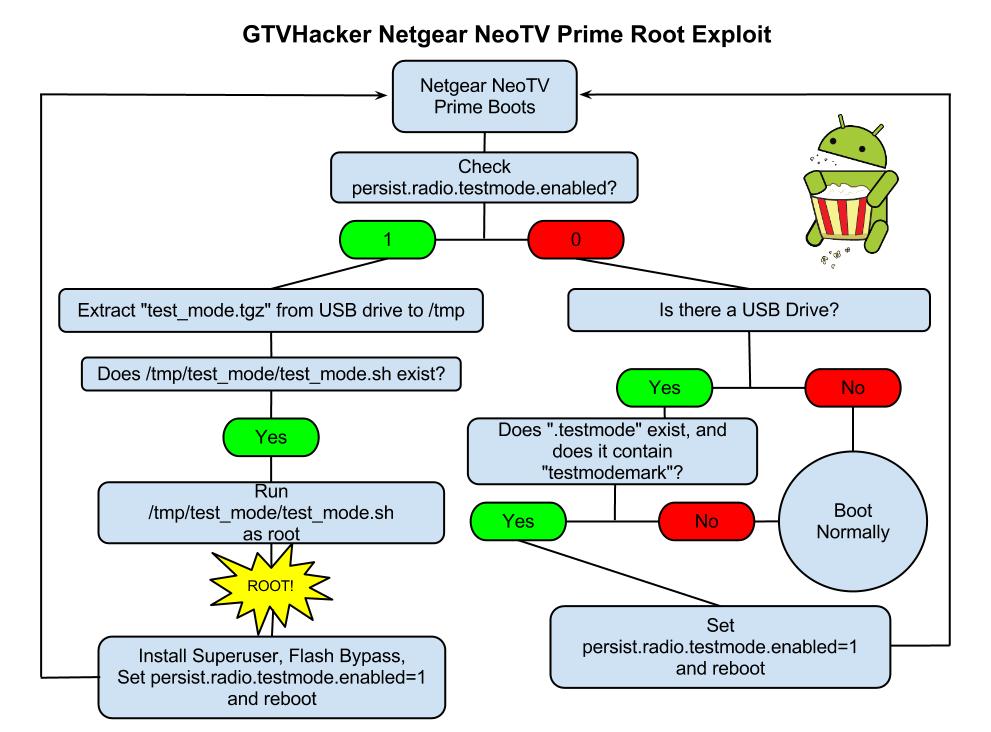
Netgear NeoTV PrimePwn Root Process
The Following are Automatically Performed:
- Installs SuperSu.apk
- Disables automatic updates
- Modifies flash plug-in to allow streaming of Hulu and other previously blocked content providers
Neo TV “PrimePwn” Root Process:
1.) Download PrimePwn.zip
2.) Extract the PrimePwn.zip to a Fat32 formatted USB drive. (test_mode.tgz, .testmode, README)
3.) Put the USB drive into your NeoTV Prime and reboot.
4.) Let the process run, it will reboot a few times and then will end at the home screen. (Approximately 3 minutes later)
5.) Remove your USB drive.
Demo Video

Netgear NeoTV Prime UART Pinout
Extra:
Netgear was kind enough to add an extra line in the init script that forces the hardware (UART) console to spawn as root. The box can be difficult to take apart and the software root is an easy process so we don’t recommend you use this method. We just wanted to mention its existence.
GTVHacker Wiki: Netgear NeoTV Prime
Enjoy!
Purchase at Amazon or Newegg
Discuss More…
Posted: January 3rd, 2013 | Author: cj_000 | Filed under: GTVHacker | Tags: Custom Recovery, Exploit, Generation 2, GTVHacker, Hisense, Recovery, Root, sony, Vizio | Comments Off on GTVHacker – A Brief History And a Sneak Peek
A little over 2 years ago a band of miscreants came together from an XDA developers forum post and started working together to get privileged code execution on the Google TV. Little did we know that the challenges would be greater than anyone could imagine.
 When the Google TV was released it was easily one of the most locked down Android devices containing a signature enforced bootloader which established a “chain of trust” between it and every component loaded thereafter. The hardened state of the kernel the device came with made things even worse, with the kernel enforcing module signing as well as lacking most of the popular Android vulnerabilities that were plaguing the mobile world. This Android device was truly unlike most others.
When the Google TV was released it was easily one of the most locked down Android devices containing a signature enforced bootloader which established a “chain of trust” between it and every component loaded thereafter. The hardened state of the kernel the device came with made things even worse, with the kernel enforcing module signing as well as lacking most of the popular Android vulnerabilities that were plaguing the mobile world. This Android device was truly unlike most others.
So we began work attempting to win an advertised cash bounty for being the first to gain root access on the newly released device. After some work, we posted the first root method for the Logitech Revue, winning a $500 prize. Since then it has been our goal to make Google TV an open platform by unlocking each released device. There were plenty of challenges along the way, in the form of long nights reversing code and many bricked devices. But along with the challenges there have also been many triumphs in the form of releases.
Going over some of our biggest acheivements in the last 2 years:
- Found and released a hardware root method for the Logitech Revue and assisted Dr. Dan Rosenberg in finding a software root exploit.
- Found and released multiple exploits for the Sony NSZ-GT1 and Sony Google TV television line, breaking the established chain of trust.
- Received a secret message from Logitech within the stock recovery on the Logitech Revue.
- Released our own customized and completely open Google TV kernel which utilized a chain of exploits to execute.
- Had the opportunity to present at the 20th annual “DEFCON” security conference in which we we teased a root exploit for the newly released NSZ-GS7 but are still waiting to leverage it until more hardware comes out.
- While working on porting the Boxee OS to the Google TV we found and released 2 exploits which have enabled the Boxee community to install a popular modification package known as Boxee+.
- We released a modification package for the Hisense Pulse which leveraged the intial debug configuration of the device for root, disabled automatic updates, and modified the flash plug-in allowing you to watch Hulu and other previously blocked content providers.
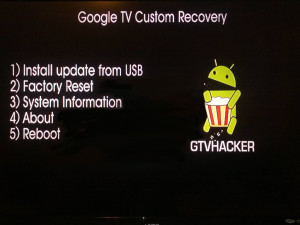 In regards to the future of GTVHacker, over the past month we found and have been developing an exploit which will allow for custom kernels to be run on most of the newest generation of Google TV devices. We’ve also (cj_000 specifically) been busy making a custom recovery specifically designed for the Google TV. You may already know this but, there are a number of differences between the Google TV and other Android devices and these difference make it impossible to simply build a popular AOSP based recovery or kernel image. Due to these differences, we had to make our own recovery from scratch. At the time of writing this it’s still in a beta phase and rather simple. It only allows for installation of an update.zip package from usb. This can be a modified update, a superuser binary and apk or whatever else you wish. We’ve also started adb over ethernet to allow for custom system changes that may require more interaction than a update package.
In regards to the future of GTVHacker, over the past month we found and have been developing an exploit which will allow for custom kernels to be run on most of the newest generation of Google TV devices. We’ve also (cj_000 specifically) been busy making a custom recovery specifically designed for the Google TV. You may already know this but, there are a number of differences between the Google TV and other Android devices and these difference make it impossible to simply build a popular AOSP based recovery or kernel image. Due to these differences, we had to make our own recovery from scratch. At the time of writing this it’s still in a beta phase and rather simple. It only allows for installation of an update.zip package from usb. This can be a modified update, a superuser binary and apk or whatever else you wish. We’ve also started adb over ethernet to allow for custom system changes that may require more interaction than a update package.
Below is a quick demo of the custom recovery mentioned above being tested on a Sony NSZ-GS7 Google TV device. We currently don’t have a release date set as we are trying to keep most of the specifics private in order to avoid an update that could patch the exploit before the community gets to utilize it. We just wanted to give the community a sneak peek at what we’ve been working on privately over the last few months. So sit tight, 2013 will be a great year for the Google TV and GTVHacker!
Discuss More…
Posted: December 22nd, 2012 | Author: zenofex | Filed under: GTVHacker, Hisense, Root | Tags: google, Hisense, Pulse, Root, TV | 2 Comments »
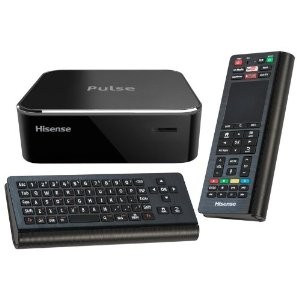 The day has finally arrived, the Hisense Pulse has launched and is finally in our hands. Upon first look we were impressed with the speed of navigation from within the menus. If you have experience with the previous generation of the Google TV platform then you’ll recognize the Pulse’s UI which seems to be almost identical to that of the Logitech Revue. The form factor of the Pulse is similar in size and shape to that of the already released Vizio Co-Star, and the motherboard layout makes it seem like they used a similar design. One difference between the Co-Star and the Pulse is that the Pulse’s remote is much more intuitive and its use feels more natural. All together it’s exactly what someone would expect for another device in the Google TV family but with one of the cheapest prices in its generation.
The day has finally arrived, the Hisense Pulse has launched and is finally in our hands. Upon first look we were impressed with the speed of navigation from within the menus. If you have experience with the previous generation of the Google TV platform then you’ll recognize the Pulse’s UI which seems to be almost identical to that of the Logitech Revue. The form factor of the Pulse is similar in size and shape to that of the already released Vizio Co-Star, and the motherboard layout makes it seem like they used a similar design. One difference between the Co-Star and the Pulse is that the Pulse’s remote is much more intuitive and its use feels more natural. All together it’s exactly what someone would expect for another device in the Google TV family but with one of the cheapest prices in its generation.
Our biggest and most unexpected surprise came within moments of our first examination of the Pulse. Upon receiving any new hardware, partially because of our previous experience with the Revue, we like to start off disassembling the hardware even before powering on a device. After doing so in this particular instance we found that a hardware root-shell is enabled by default through the serial console header on the device’s motherboard. Better yet, the root-shell is available in both recovery and normal boot which allows for tinkering of the device in both modes of operation. 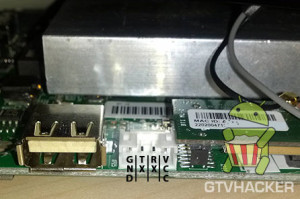 While we’ve seen serial consoles left in prior Google TV devices (see: Logitech Revue), we had yet to see a Google TV device that included a shell within both normal and recovery mode, let alone one in the second generation of the Google TV platform. While leaving a hardware shell leaves the box almost completely vulnerable its use still requires some soldering experience. However, after further exploration we noticed a 4 pin header on the Pulse PCB which allowed us to simply plug in a common connector and avoid soldering all together! This adapter is conveniently in a location that can be accessed by either temporarily opening the device and plugging in the adapter, or for more permanent use, by cutting a hole in the side of the case. The ease of access to the pin header as well as the obvious oversight of the serial console was just the beginning of our findings.
While we’ve seen serial consoles left in prior Google TV devices (see: Logitech Revue), we had yet to see a Google TV device that included a shell within both normal and recovery mode, let alone one in the second generation of the Google TV platform. While leaving a hardware shell leaves the box almost completely vulnerable its use still requires some soldering experience. However, after further exploration we noticed a 4 pin header on the Pulse PCB which allowed us to simply plug in a common connector and avoid soldering all together! This adapter is conveniently in a location that can be accessed by either temporarily opening the device and plugging in the adapter, or for more permanent use, by cutting a hole in the side of the case. The ease of access to the pin header as well as the obvious oversight of the serial console was just the beginning of our findings.
After finishing up our quick analysis of the hardware we finally had the opportunity to explore how the device’s software side was configured. We found that even with the hardware root oversight being as unexpected and less secure than any of its counter parts, the software side was worse. After browsing through the system’s init scripts, and checking the props, we noticed that a simple “adb root” to the device would restart adb as root therefore providing us with a root shell via adb.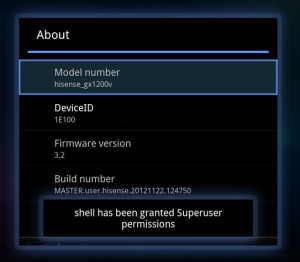
Why is this device so much less secure than any of the other Google TV devices? Is this an oversight, or did someone at Hisense purposely leave it there to show community support? We hope that someone did this purposely as it would be great if a manufacturer or Google finally embraced the modding community, but it was probably just an oversight.
Knowing this, we thought it would be best to release our findings for the community as soon as possible as it will likely be patched quickly with the next automatic update. However, if you do have a Hisense Pulse and would like to take advantage of root before it’s possibly patched. We have a package that will perform a few community desired modifications such as:
- Install Superuser.apk and su binary to device.
- Patch flash player to allow content to be played from previously blocked websites (Hulu, Fox, CBS, NBC, etc.).
- Disable automatic updates to preserve root (can easily be reversed).
You can find information on our modification package at the GTVHacker Wiki page for the Hisense Pulse
We have more coming soon, check back around the first of the year for a sneak peek at something even more awesome than this!
Looking to purchase a Hisense Pulse and also want to support GTVHacker? [Use this link to purchase at Amazon]
Discuss More…
Posted: December 2nd, 2012 | Author: cj_000 | Filed under: GTVHacker | Tags: Asus, GTV100, NeoTV Prime, Netgear, Qube | Comments Off on The Netgear NeoTV Prime (GTV100) and Asus Qube – info on the next Google TV boxes
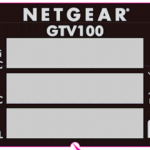 Netgear GTV100 Label
Netgear GTV100 Label
The GTVHacker team had heard rumors of a Netgear Google TV device for a while, but the rumors were confirmed recently when GTVHacker team member cj_000 found FCC documentation for the new device. We waited to see if any of the big news sites would find the documentation and pictures, but since the community has yet to find them – here you go: A look at the Netgear NeoTV Prime (GTV100)!

Netgear GTV100 Remote
This is a generation 2 Google TV box, it will probably look fairly close to the Vizio Co-Star (hardware wise) but with a different case. There is also more than likely going to be a custom UI to help separate the NeoTV Prime from Google TV competitors but we have yet to have that information confirmed. For more on the NeoTV Prime, check out the remote, and WiFi module:
NeoTV Prime Remote via the FCC /
NeoTV Prime Wifi Module via the FCC.

Asus Qube Remote Dongle
That brings us to the Asus Qube, which is a Google TV box that had its remote module hit the FCC yesterday. In regards to hardware and software, the Qube should be a similar device. We’re not expecting any major surprises here, every generation 2 Google TV device (excluding the LG G2) has used the same Marvell 88DE3100 series chipset. It is worth mentioning that some are reporting this to be a USB stick. The sheer size of cooling needed for the Marvell 88DE3100 series (Armada 1500) chip makes this theory unlikely.
For instance, take a look at our Sony NSZ-GS7 teardown or the internals of the Vizio Co-Star. Both need quite a bit of cooling due to the Marvell CPU which would be near impossible with a USB powered “dongle”.
Below are direct links to the FCC information on the Asus Qube as well as the app mentioned in the Engadget article that originally broke the story on the Qube.
Engadget Source /Asus Qube via the FCC / Asus Oplay via Google Play
Posted: February 26th, 2012 | Author: zenofex | Filed under: GTVHacker, Root, Sony, Updates | Comments Off on Rumor: New update coming in Monday patching Sony GoogleTV exploit
A source has told us that Sony has already started testing a fix for the recent exploit and plans to have it coming out as soon as Monday as an OTA update. If this is correct that means that after you receive this automatic over-the-air update you will no longer be able to run the “recovery downgrade” or perform the recovery exploit to root your Sony GoogleTV. We advise all users to perform the recovery downgrade as well as the software root as soon as possible. The current custom kernel included in the root works very well and there are more custom kernels coming soon! If anything, the main reason to perform the exploit is to preserve your box from receiving the next update (which from what we’ve heard is only a security update). Then you will still have the option to revert back to the normal OTA at anytime. You will also however have the option to run one of our new upcoming kernels which we guarantee will make you all very happy. Otherwise, if you haven’t already performed our root, and your box does take this automatic update you will be stuck with using only official Sony GoogleTV builds, no Hulu/content provider bypass and no root.
As we’ve stated in the previous post, the guide and information about the process can be found at our wiki. Also just a note, the guide below states that you need 4 thumb drives to accomplish the exploit but with a little more work you are able to accomplish the entire process with 1.
How to Root Guide:
GTVHacker.com: Running Unsigned Kernels On Sony GTV
For a more detailed look into how the exploit and recovery downgrade works, check out the about:
GTVHacker.com: About The Sony Downgrade & Rebooter (Root)
And finally, for support or to comment checkout our forum post:
GTVHacker Forums: NSX-GT1 and NSZ-GT1 exploit to run unsigned kernels!
GTVHacker
Posted: November 3rd, 2011 | Author: resno | Filed under: GTVHacker | Comments Off on Plex Media Center Now Runs on Google TV
Read the full details here: http://www.slashgear.com/plex-app-hits-google-tv-03192677/
Ill write a post hopefully later.
Posted: October 11th, 2011 | Author: zenofex | Filed under: GTVHacker, Logitech Revue | 1 Comment »
 Greetings to our friendly overlords at Logitech? It turns out our work here hasn’t gone entirely unnoticed by the corporate androids; we recently found something very well hidden and quite unexpected in the recovery binary on the Logitech Revue. Namely, we’ve stumbled upon our own names, along with this interesting message:
Greetings to our friendly overlords at Logitech? It turns out our work here hasn’t gone entirely unnoticed by the corporate androids; we recently found something very well hidden and quite unexpected in the recovery binary on the Logitech Revue. Namely, we’ve stumbled upon our own names, along with this interesting message:
“@gtvhackers pbatenghyngvbaf vs lbhe ernqvat guvf cyrnfr cbfg n abgr ba lbhe sbehz gb yrg zr xabj ;)”
When decoded from rot13, the message reads:
@gtvhackers congratulations if your[sic] reading this please post a note on your forum to let me know 😉
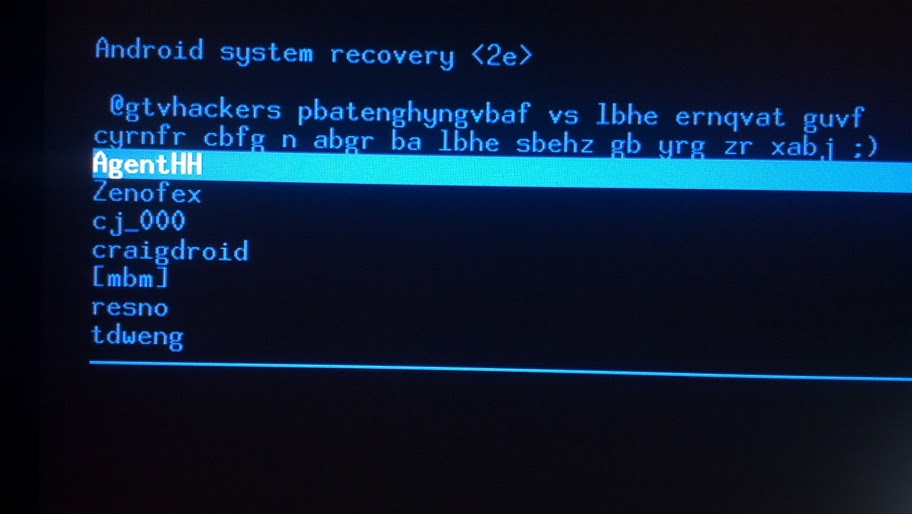 After a little poking around in recovery, [mbm] managed to grab the screenshot to the left showing the easter egg in context. We’re quite amused to be immortalized in such fashion, and we’re curious to see what other easter eggs will show up.
After a little poking around in recovery, [mbm] managed to grab the screenshot to the left showing the easter egg in context. We’re quite amused to be immortalized in such fashion, and we’re curious to see what other easter eggs will show up.
Arrq orre zbarl – tgiunpxref.
Posted: August 31st, 2011 | Author: resno | Filed under: GTVHacker | Comments Off on GTVHacker Needs You!
We’ve recently sent out the call in request for you all to send us your devices for us to work on. W

e h
ave Revues, but some of you have other devices. Its expensive for us to get our hands on all devices in order to figure out how pop them open. So, we are looking to you!
As cliche as it sounds, help us help you help us.
Ill pull an quote from the call:
Zenofex says:
As you all may know we do not currently take cash donations but any hardware donations you make save the team money and guarantee (unlike cash) that your donation will be used to help further all future GTV hacking. Tdweng and pcgeil listed a few things already that we need but we are also looking for
Software donations of:
The Intel CE 31xx/41xx SDK
Any documentation regarding the CE 31xx/41xx processors.
Hardware donations of:
“Fishtank” development units (if they aren’t required to be sent back)
Any of the CE 31xx/41xx development units from Tatung.com or Videon-Central.com
If the donation is a software donation please email me at zenofex at gtvhacker.com and we can work out a way for you to get us the software. If you have a hardware donation please contact us and we can arrange to have the item shipped to one of the members (In most cases we can provide compensation for shipping charges).
Thanks,
Zenofex
Tdweng says
Guys/Gals the gtvhacker team is looking for broken or reduced GTV both the Logitech (Revue) and Sony, but mainly the Sony so we can work with and help get those the Sony boxes rooted, among other things.
If you are willing to help us out please either message one of the core team members, join us in irc on channel #gtvhacker, or just leave a comment below.
We appreciate however you can help!
We’ll even create a listing for those who helps us out in the future!

















